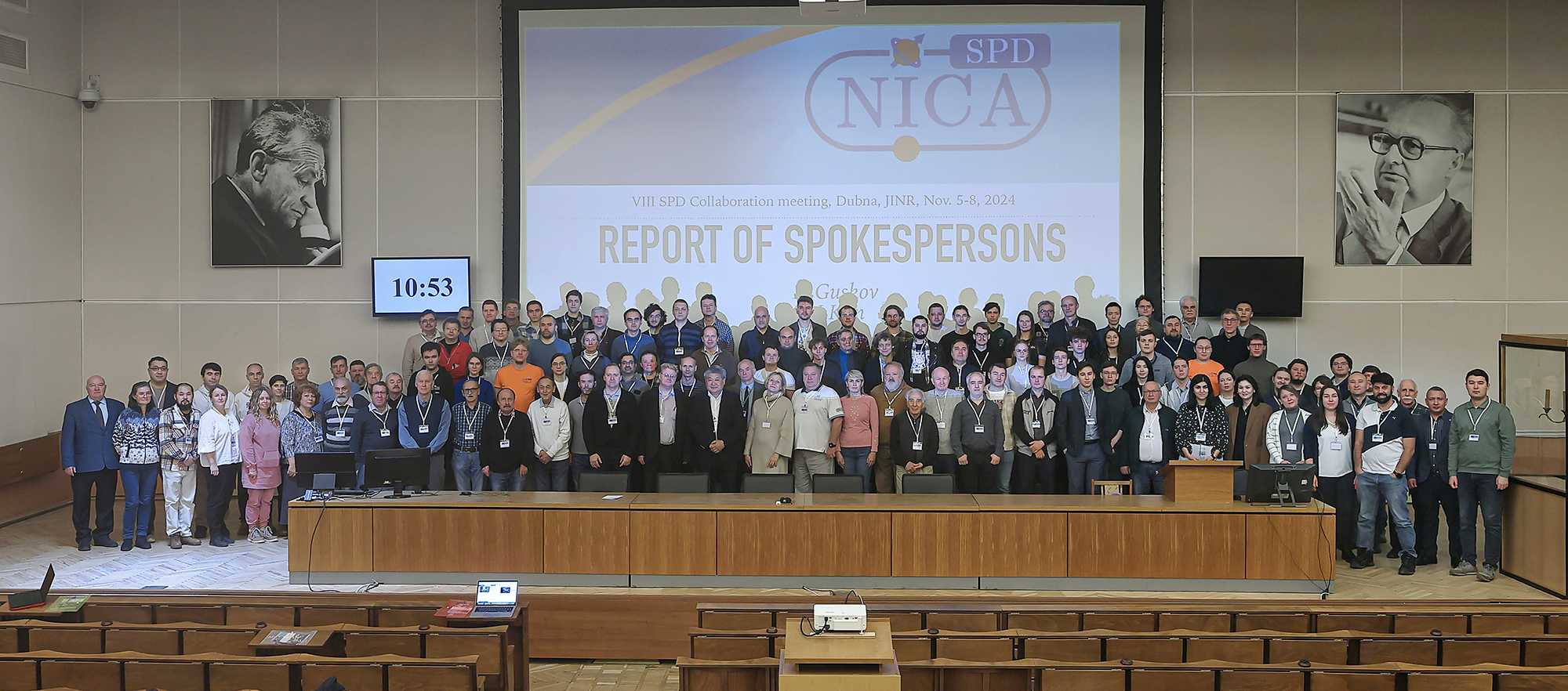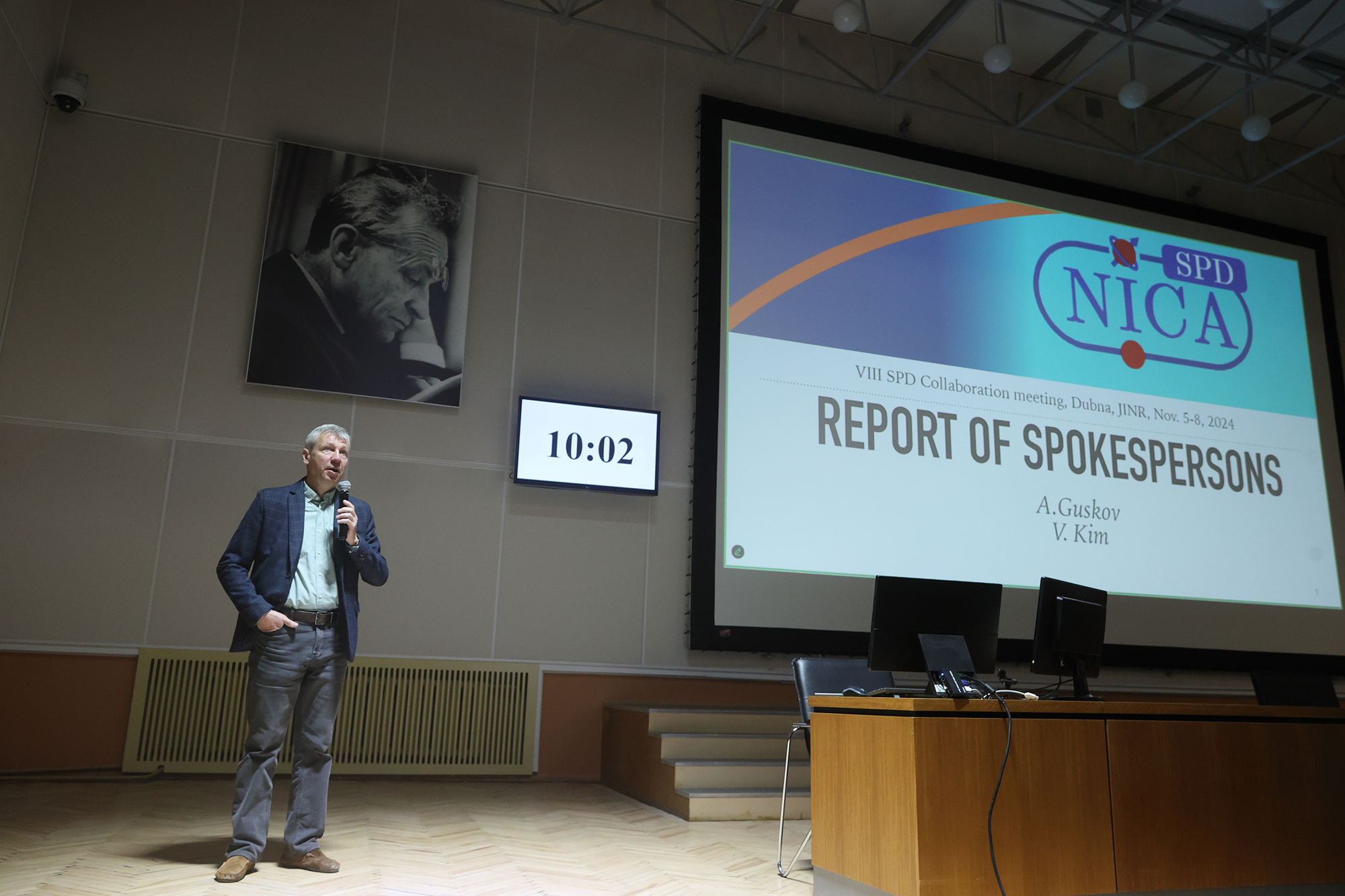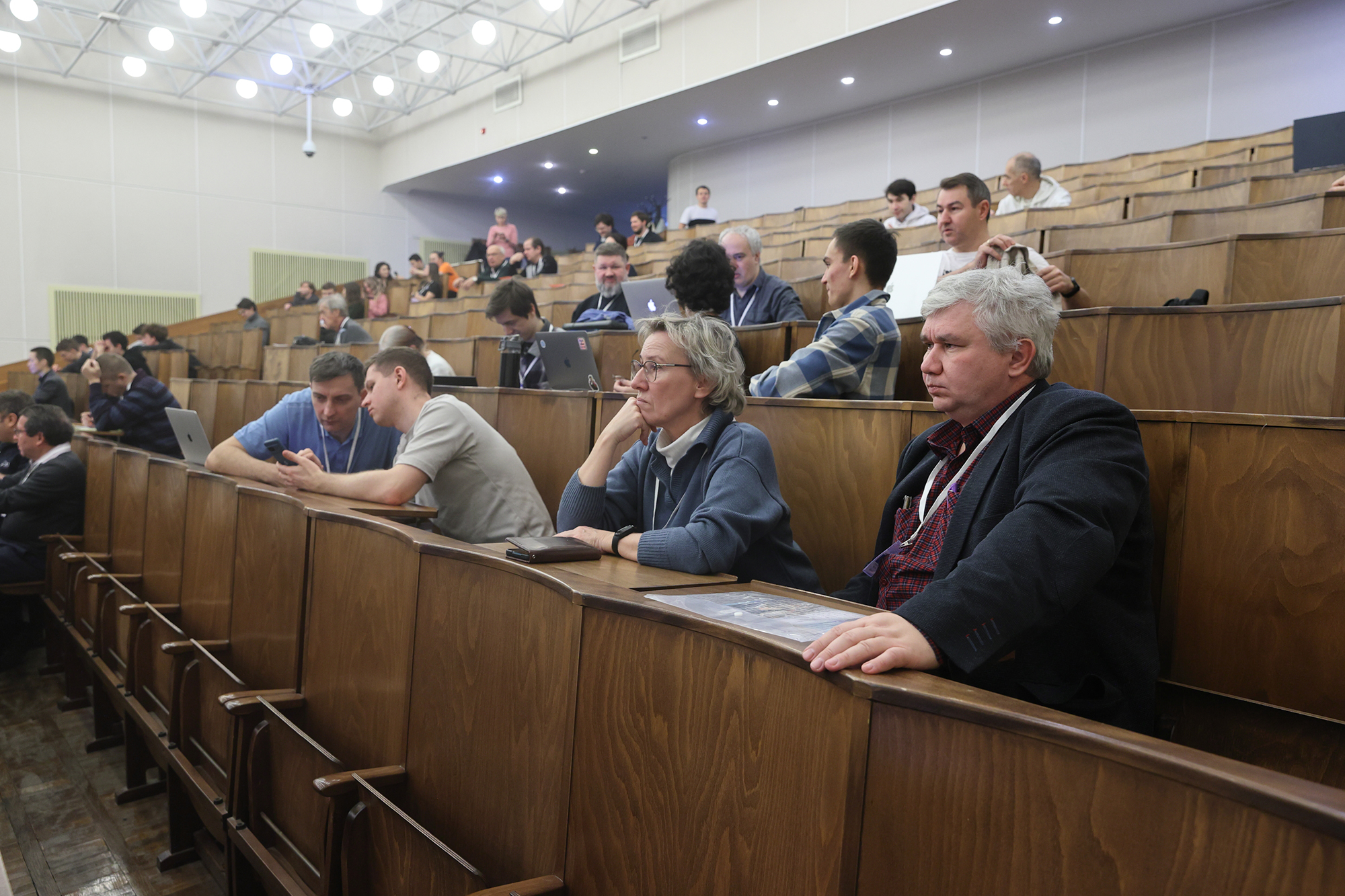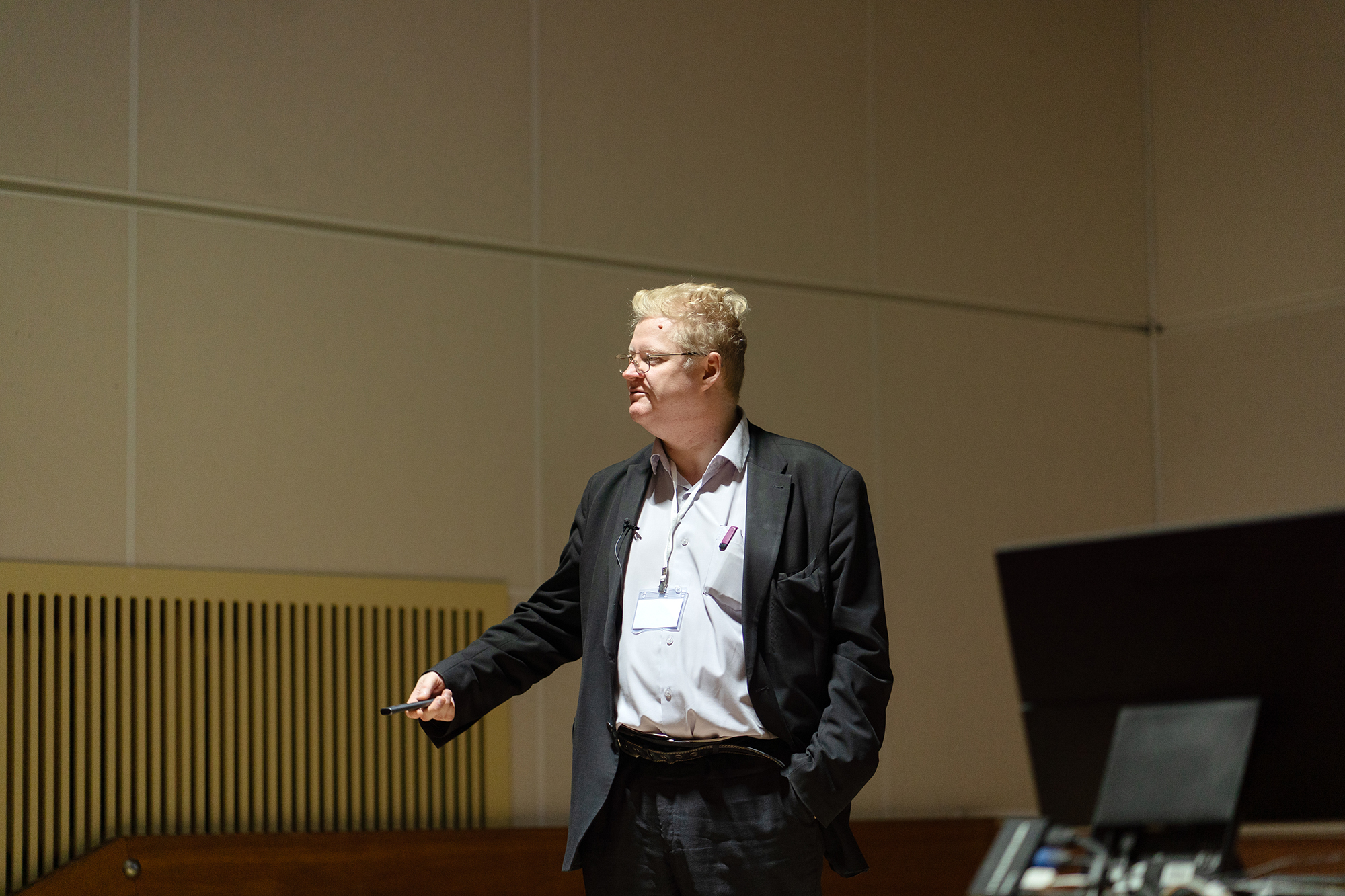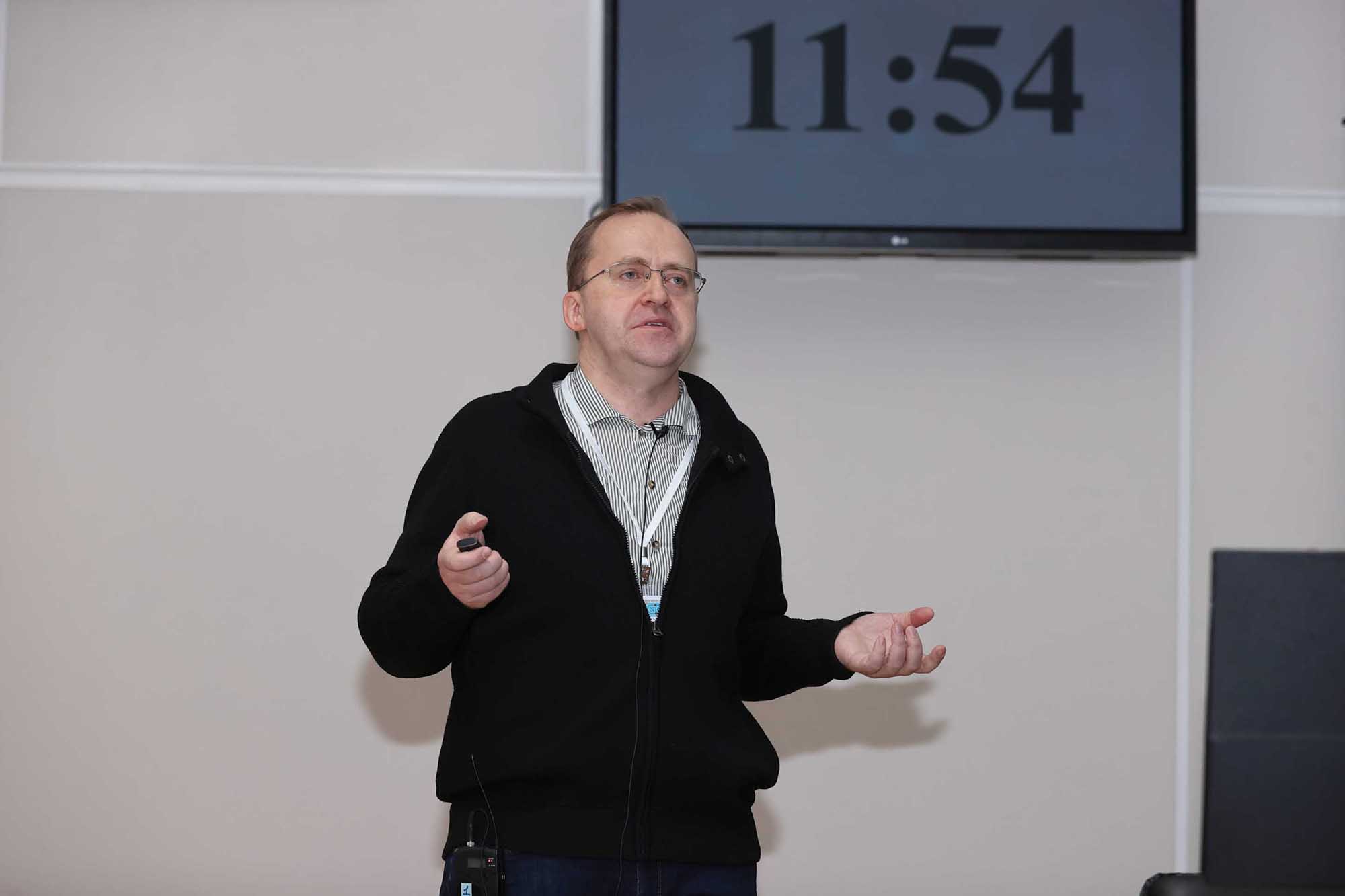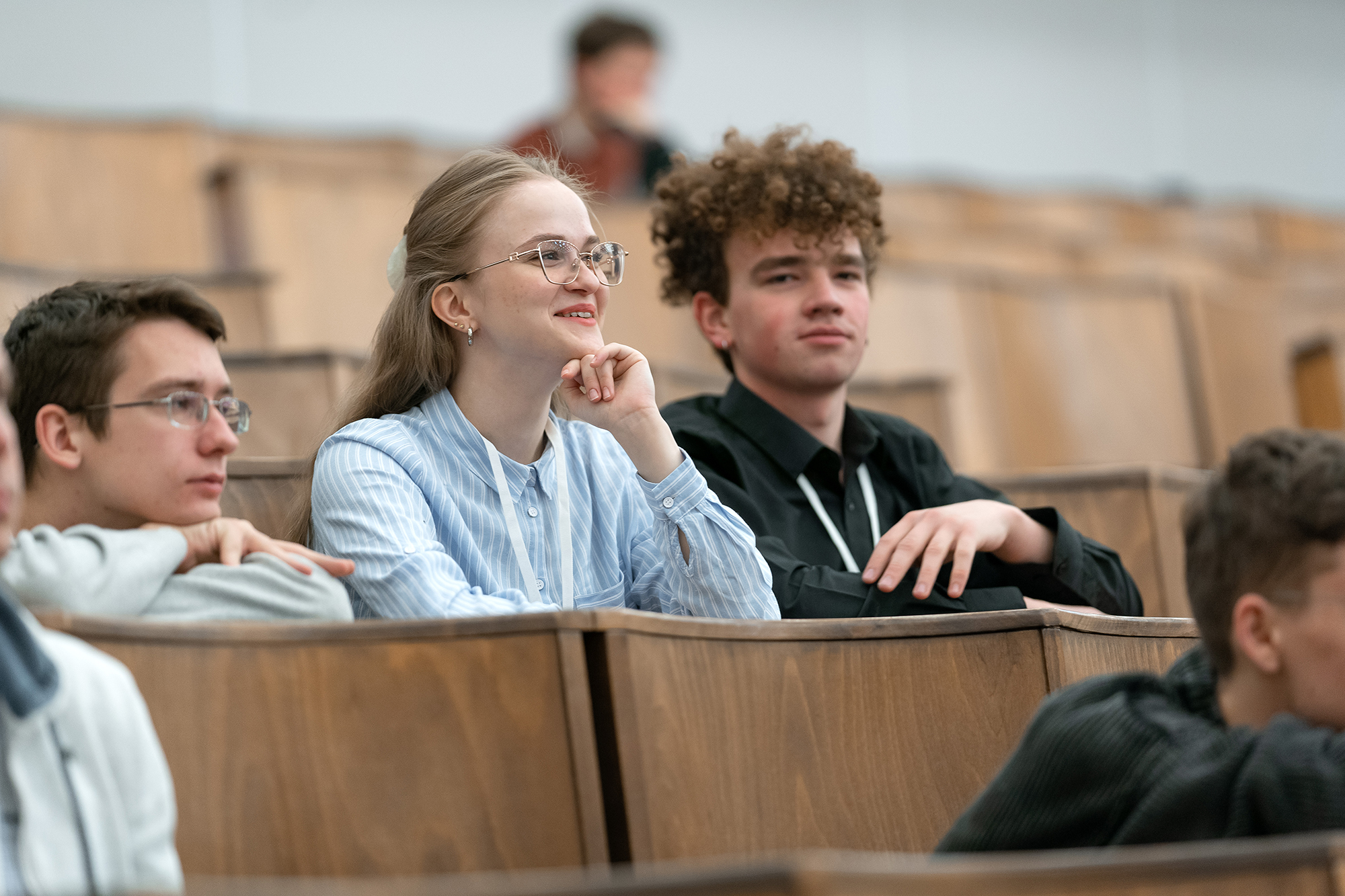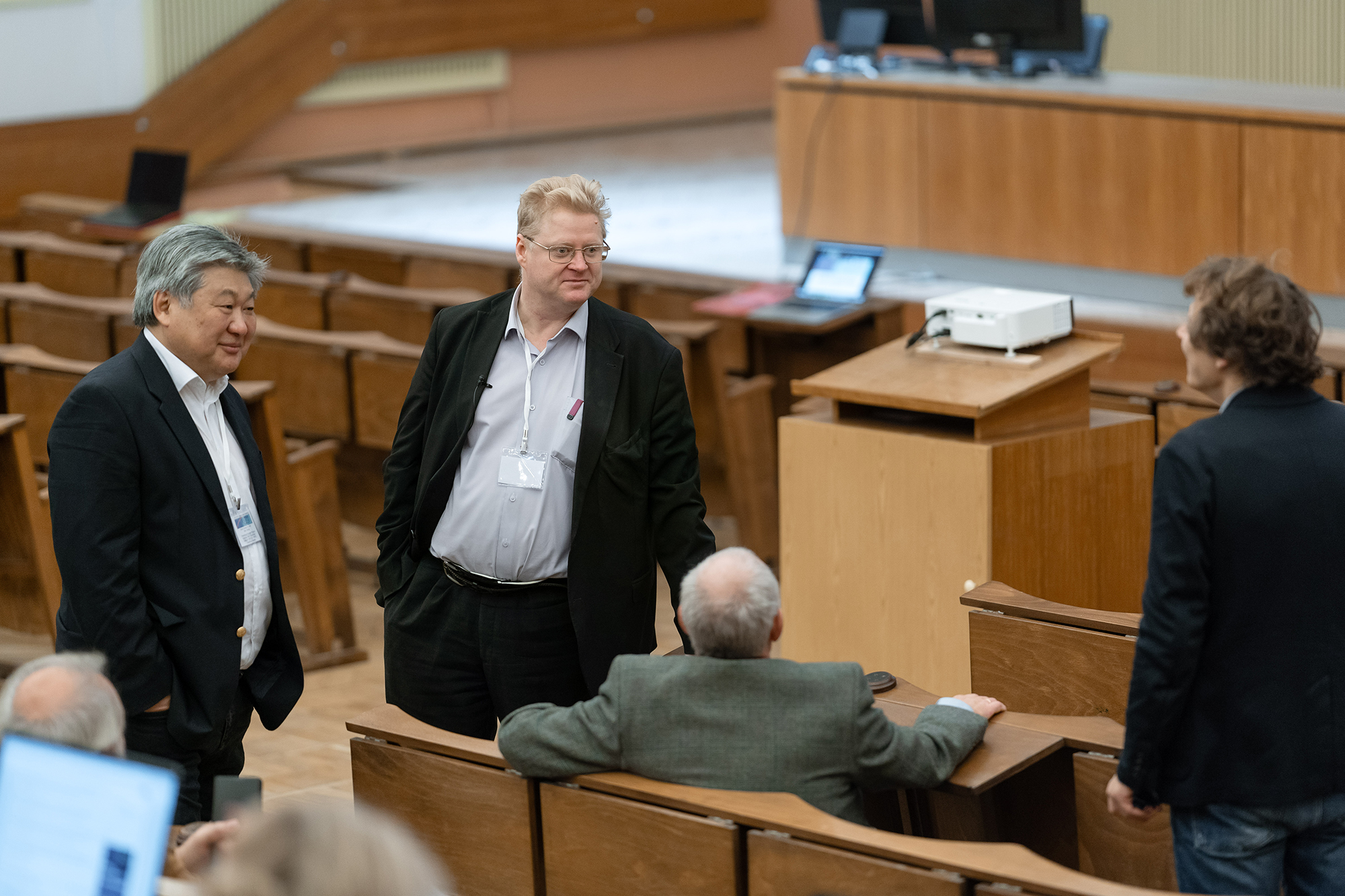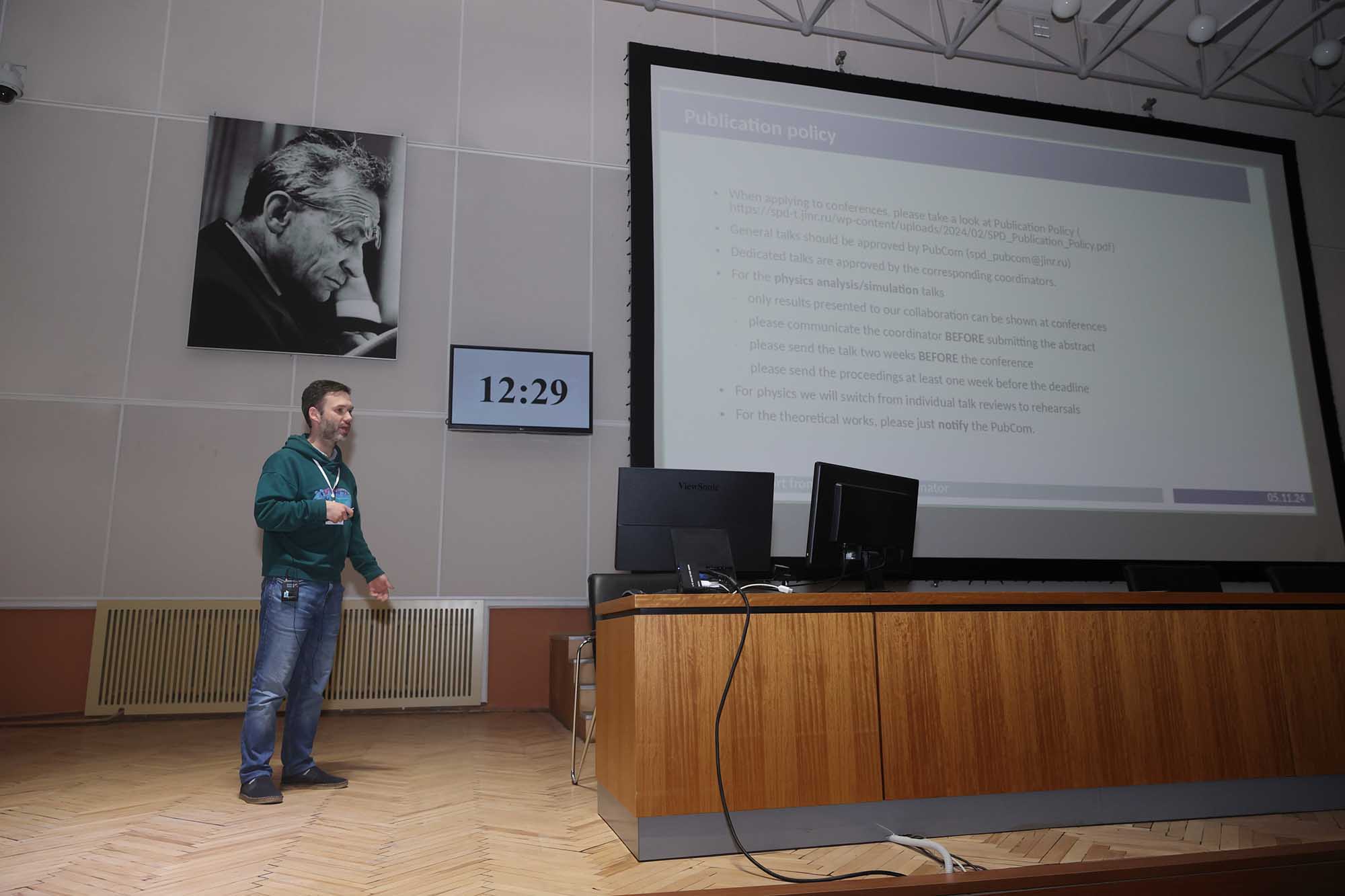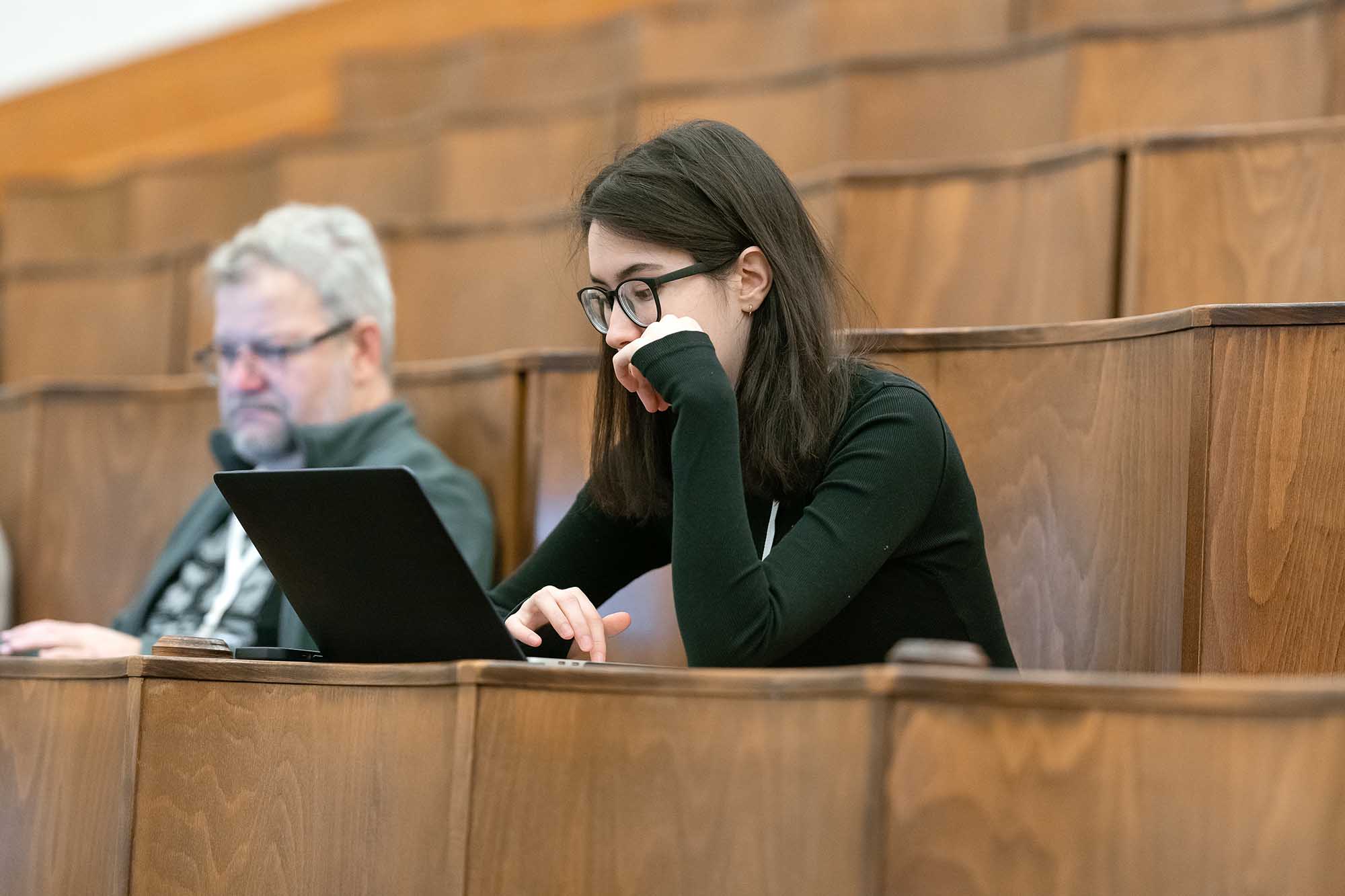SPD Collaboration Meeting starts at VBLHEP at JINR
News, 06 November 2024
On 5–8 November, the 8th Collaboration Meeting of the SPD (Spin Physics Detector) Experiment at the NICA Accelerator Complex is taking place at VBLHEP at JINR in a hybrid format. During the event, participants will discuss the progress of preparations for the experimental facility construction, and exchange experience and ideas on the collaboration development.
Before the start of the meeting, Head of the VBLHEP Division of Physics of Colliding Beams Dmitry Peshekhonov addressed the participants with a welcoming speech. “The preparation of our flagship NICA Project is finishing The programme of physical experiments with heavy ion beams with a fixed target is already is being actively implemented,” he noted. “The SPD Experiment is our future. It is exactly what will bring spin physics research to a new level.”
Co-leader of the SPD Collaboration, Deputy Director of the Laboratory of Nuclear Problems at JINR, Alexey Guskov, opened the meeting. In his speech, he talked about the progress and development prospects of the SPD Project. Following the results of the summer meeting of the PAC for Particle Physics, it was decided to extend the project for the next five years, until the end of 2029. In 2024, Russian institutes involved in the development of the SPD Experiment received about 60 million roubles from the Ministry of Science and Higher Education of the Russian Federation, as part of the NICA Megascience Project support programme. According to the co-leader of the collaboration, construction of the detector for the first stage of the experiment is planned to begin next year. Research and development work on preliminary preparation for the second stage will continue simultaneously.
“Over the past year, we have done a noticeably large amount of work. Now we are ready for a new stage, the creation of the facility for the implementation of the first stage of the experiment. I hope that the joint coordinated work of the participants will be fruitful and become the key to success of the future project,” Alexey Guskov stressed.
Chair of the SPD Collaboration Board, a leading researcher at the Alikhanyan National Science Laboratory (AANL), Armen Tumasyan, commented on the development of the collaboration. The number of participants continues to grow: more than 400 representatives from 37 organizations in 15 countries take part in the work of scientific groups. The latest organization to join was MISIS, the National University of Science and Technology. A Memorandum of Understanding has been signed with the University of Havana (Cuba). Cairo University (Egypt), Higher School of Economics (Russia), and the iThemba LABs (South Africa) are next in line to sign the memorandum. Negotiations on cooperation with several new scientific groups from China are actively underway.
As part of its work, SPD Collaboration Board continues to solve organizational issues, including the attraction of new participants as well as the update of the composition of specialised committees, the planning of future joint events, and the formation of a publication policy. At the end of his speech, Armen Tumasyan announced the election of new leaders of the collaboration next year. An AANL researcher Artur Mkrtchyan announced that the next SPD Collaboration Meeting will take place in Yerevan in 2025 at the Alikhanyan National Science Laboratory.
The responsible cooperation coordinators talked about the technical and physical parts of the experiment, and about the software development and IT infrastructure. Head of the VBLHEP JINR Scientific and Experimental Department of Hadron Spin Structure and Rare Processes, Alexander Korzenev, presented future plans for the development and creation of subsystems of the first stage of the SPD Experiment. In preparation for the main stages of the SPD Detector construction in the experimental pavilion, the collaboration participants installed rails necessary to move the facilities to the construction area. The presentation reflected the current development roadmaps for each of the SPD subsystems, which allows which allows evaluating the strategy and the dynamics of the project implementation. The detector for the first stage of the experiment is planned to be assembled by 2030.
Head of the DLNP JINR Proton−Proton Interactions Sector of the Experimental Department of Colliding Beams Igor Denisenko made a presentation on the progress, plans, and results of the project obtained by the participants of the collaboration on modelling the physical processes of the SPD Experiment. JINR Deputy Chief Scientific Secretary, DLNP JINR Deputy Head of the Experimental Department of Colliding Beams Alexey Zhemchugov spoke about the preliminary results and further prospects for the improvement of the computing infrastructure and software development of the experiment.
Closing the plenary session, VBLHEP JINR Deputy Head of the Accelerator Department for Scientific Work Valery Lebedev gave a presentation on the progress and plans for the launch of the NICA Accelerator Complex. In his speech, he stressed the importance of preparing the necessary infrastructure for working with polarised proton and deuteron beams at the collider.
During the four working days, the participants of the SPD Collaboration will elaborate on the current state of work on the main subsystems of the facility, electronics, and software. Special attention will be paid to the consideration of the first stage of the experiment physical research programme. More than 200 scientists from all over the world are taking part in the 8th Collaboration Meeting of the SPD Experiment. Over 50 participants from institutes of Armenia, Belarus, Kazakhstan, and Russia came to Dubna.
The programme of the event includes more than 70 presentations on current and future studies of the spin structure of the proton and deuteron in collisions at high luminosity, the creation and optimisation of the experimental facility, and the development of related software.
